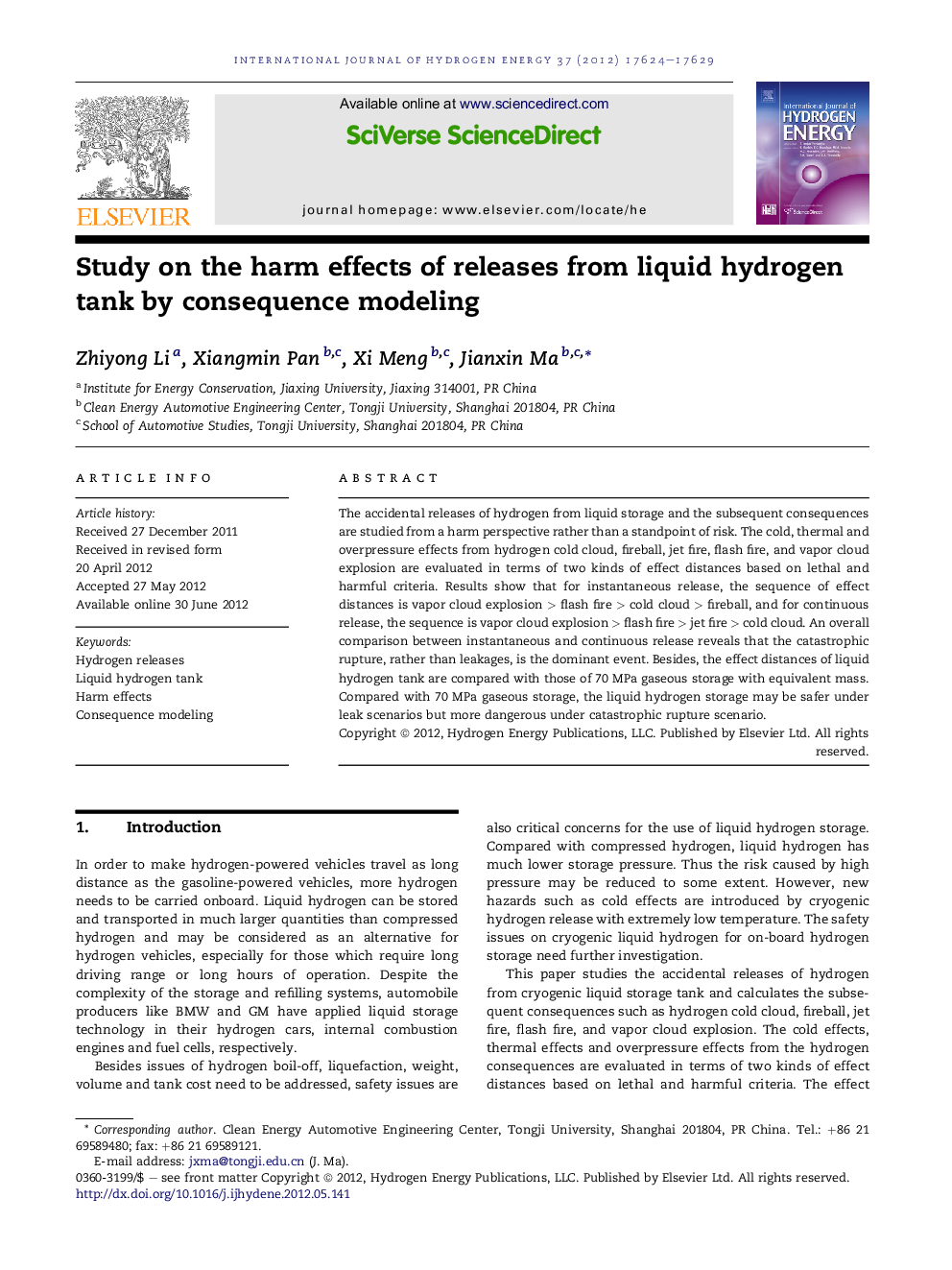| Article ID | Journal | Published Year | Pages | File Type |
|---|---|---|---|---|
| 1270951 | International Journal of Hydrogen Energy | 2012 | 6 Pages |
The accidental releases of hydrogen from liquid storage and the subsequent consequences are studied from a harm perspective rather than a standpoint of risk. The cold, thermal and overpressure effects from hydrogen cold cloud, fireball, jet fire, flash fire, and vapor cloud explosion are evaluated in terms of two kinds of effect distances based on lethal and harmful criteria. Results show that for instantaneous release, the sequence of effect distances is vapor cloud explosion > flash fire > cold cloud > fireball, and for continuous release, the sequence is vapor cloud explosion > flash fire > jet fire > cold cloud. An overall comparison between instantaneous and continuous release reveals that the catastrophic rupture, rather than leakages, is the dominant event. Besides, the effect distances of liquid hydrogen tank are compared with those of 70 MPa gaseous storage with equivalent mass. Compared with 70 MPa gaseous storage, the liquid hydrogen storage may be safer under leak scenarios but more dangerous under catastrophic rupture scenario.
► Vapor cloud explosion can be considered as the leading consequence. ► Catastrophic rupture is the dominant event rather than leakages. ► For instantaneous release, 70 MPa gaseous storage is safer than liquid storage. ► For continuous release, liquid storage is safer than 70 MPa gaseous storage.
